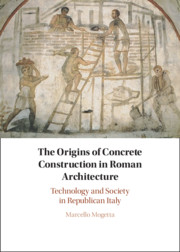 The Origins of Concrete Construction in Roman Architecture
The Origins of Concrete Construction in Roman Architecture Book contents
- The Origins of Concrete Construction in Roman Architecture
- The Origins of Concrete Construction in Roman Architecture
- Copyright page
- Contents
- Plates
- Figures
- Tables
- Acknowledgments
- One Introduction
- Two Deconstructing Roman Concrete
- Three A New Date for Concrete in Rome
- Four A View from the Suburbium
- Five Building Samnite Pompeii
- Six Colonial Networks
- Seven Conclusion
- Appendix Catalog of Sites
- Glossary
- Bibliography and Abbreviations
- Index
- Plate Section (PDF Only)
- References
Bibliography and Abbreviations
Published online by Cambridge University Press: 15 June 2021
- The Origins of Concrete Construction in Roman Architecture
- The Origins of Concrete Construction in Roman Architecture
- Copyright page
- Contents
- Plates
- Figures
- Tables
- Acknowledgments
- One Introduction
- Two Deconstructing Roman Concrete
- Three A New Date for Concrete in Rome
- Four A View from the Suburbium
- Five Building Samnite Pompeii
- Six Colonial Networks
- Seven Conclusion
- Appendix Catalog of Sites
- Glossary
- Bibliography and Abbreviations
- Index
- Plate Section (PDF Only)
- References
- Type
- Chapter
- Information
- The Origins of Concrete Construction in Roman ArchitectureTechnology and Society in Republican Italy, pp. 260 - 303Publisher: Cambridge University PressPrint publication year: 2021


